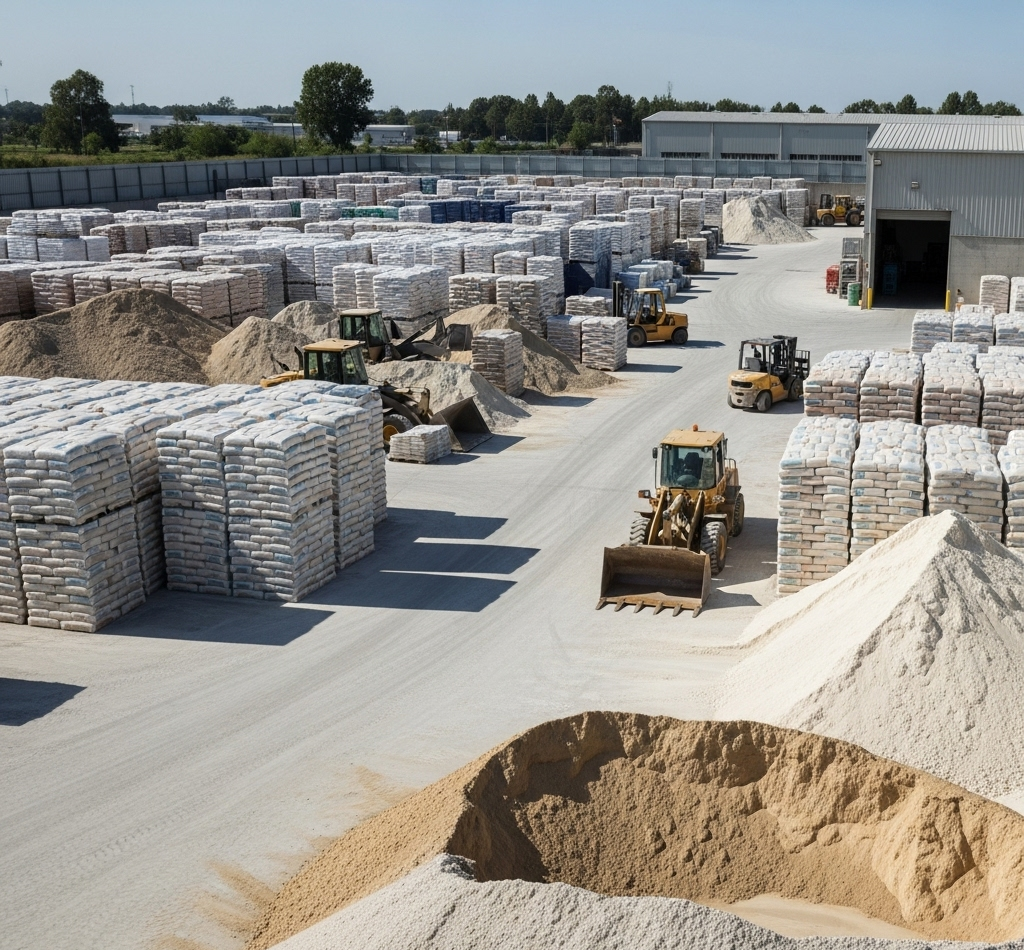
Cement and lime are foundational materials in construction, agriculture, and industrial applications, but procuring them efficiently requires navigating challenges related to regional availability and transport costs. Understanding these factors can help businesses optimize their supply chains, reduce costs, and ensure timely project delivery. This blog post explores key considerations and strategies for effective cement and lime procurement.
The availability of cement and lime varies significantly by region due to differences in raw material deposits, production facilities, and market demand. Here’s what to consider:
Geographic Distribution of Resources: Limestone, a primary raw material for both cement and lime, is abundant in some regions but scarce in others. For example, areas like the Midwest in the United States or parts of Europe have ample limestone quarries, while regions like the Middle East may rely on imports. Researching local quarry and production capacities is critical to identifying reliable suppliers.
Production Capacity: Cement and lime production is capital-intensive, and not all regions have large-scale manufacturing plants. For instance, developing countries may have limited local production, leading to dependence on imports, which can introduce delays and cost fluctuations. Checking the proximity of cement plants or lime kilns to your project site can help assess supply reliability.
Seasonal and Market Influences: Demand spikes, such as during construction booms, can strain local supplies. In regions with harsh winters, production may slow due to reduced quarrying or transport challenges. Monitoring market trends and planning procurement in advance can mitigate shortages.
Transport costs are a significant factor in cement and lime procurement, as these materials are heavy and bulky, making logistics expensive. Here’s how to address transport challenges:
Proximity to Suppliers: Sourcing from nearby suppliers reduces transport costs and lead times. For example, a construction project in Texas might prioritize cement plants in the state, which has a robust cement industry, over distant suppliers. Use supplier databases or industry associations to locate nearby producers.
Mode of Transport: The choice of transport—truck, rail, or barge—affects costs. Trucks are flexible but costly for long distances, while rail or barge transport is more economical for bulk shipments over longer routes. For instance, cement plants near rivers or ports can leverage barge transport to coastal regions, cutting costs significantly. Evaluate transport infrastructure near your project site to determine the most cost-effective option.
Bulk Purchasing: Ordering in bulk can reduce per-unit transport costs, as suppliers often offer discounts for large shipments. However, this requires adequate storage facilities to prevent material degradation, especially for lime, which is sensitive to moisture. Invest in proper storage or coordinate just-in-time deliveries to balance cost savings with quality control.
Fuel Price Volatility: Fuel costs directly impact transport expenses. Long-term contracts with suppliers or transport providers can lock in rates and shield against price spikes. Additionally, monitoring fuel market trends can inform optimal timing for large shipments.
To overcome challenges related to regional availability and transport costs, consider the following strategies:
Build Strong Supplier Relationships: Partnering with reliable suppliers ensures priority access to materials during shortages. Regular communication can also provide insights into upcoming price changes or supply constraints.
Diversify Supply Sources: Relying on a single supplier increases risk. Establish relationships with multiple suppliers across different regions to mitigate disruptions caused by local shortages or transport issues.
Leverage Technology: Use supply chain management software to track availability, compare supplier quotes, and optimize transport routes. Tools like Lasso can streamline procurement and reduce costs.
Plan for Contingencies: Maintain a buffer to account for unexpected delays or price increases. For example, stockpiling a small reserve of cement or lime during low-demand periods can prevent project delays during supply shortages.
Sustainability Considerations: Transporting materials over long distances increases carbon emissions. Sourcing locally or using suppliers with eco-friendly production methods can align procurement with sustainability goals, potentially attracting environmentally conscious clients.
Effective cement and lime procurement requires a strategic approach to regional availability and transport costs. By understanding local supply dynamics, optimizing logistics, and building resilient supply chains, businesses can ensure cost-effective and timely access to these critical materials. Proactive planning and strong supplier relationships are key to navigating the complexities of procurement in this industry. Whether you’re managing a small construction project or a large industrial operation, these strategies can help you stay ahead of challenges and keep your projects on track.
© 2025 Lasso Supply Chain Software LLC
Get instant access to our report on the Top Procurement Trends of 2025 by filling out the form below.

Get instant access to our report on the Top Procurement Trends of 2025.